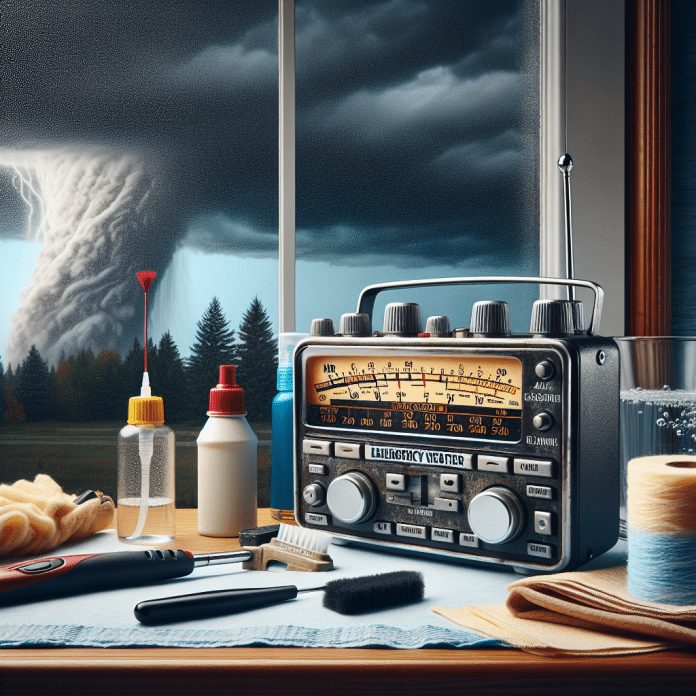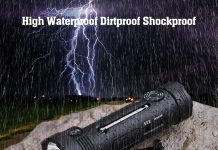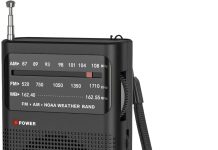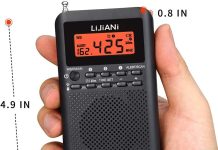If you’re the proud owner of an emergency weather radio, you may be wondering how to properly clean and care for this vital device. After all, it’s important to ensure that your radio is in top-notch condition to provide accurate and up-to-date weather information when you need it the most. In this article, we’ll guide you through the steps to effectively clean and maintain your emergency weather radio, ensuring its longevity and reliability so that you can stay informed and prepared during those unexpected weather events. So let’s jump right in and discover the best practices for keeping your emergency weather radio in great shape!
Review contents
Cleaning and Maintaining the Exterior
Using a Soft Cloth or Brush
To keep the exterior of your emergency weather radio clean, it is important to use a soft cloth or brush. This will prevent any scratches or damage to the surface. Gently wipe the radio with the cloth, ensuring that you reach all the nooks and crannies. If there is any dirt or grime that is difficult to remove, you can use a soft brush to gently scrub the area. Be careful not to apply too much pressure, as this could damage the radio.
Avoiding Harsh Cleaning Products
When cleaning your emergency weather radio, it is important to avoid using harsh cleaning products. These can potentially damage the surface or even enter the internal components of the radio. Instead, opt for mild cleaning solutions or simply use water and a soft cloth. If you are unsure about the appropriateness of a particular cleaning product, it is always best to consult the manufacturer’s instructions.
Cleaning the Speaker and Microphone
To ensure optimal audio output, it is essential to clean the speaker and microphone of your emergency weather radio. You can do this by gently wiping the surfaces with a soft cloth. If there is any debris or dirt lodged in these areas, you can use a cotton swab to carefully remove it. It is important to be gentle and avoid applying too much pressure, as this could damage the components.
Inspecting and Replacing Antenna
The antenna of your emergency weather radio plays a crucial role in receiving signals. It is important to inspect the antenna regularly to ensure it is in good condition. Look for any signs of damage, such as cracks or bends. If you notice any issues, it is advisable to replace the antenna. Most radios have detachable antennas that can be easily replaced. Consult the manufacturer’s instructions for guidance on how to replace the antenna specific to your radio model.
Cleaning the Battery Compartment
Removing the Batteries
Before cleaning the battery compartment, it is important to remove the batteries from your emergency weather radio. This will prevent any accidental damage to the radio while cleaning. Follow the instructions provided by the manufacturer to safely remove the batteries. Take care not to touch the metal contacts inside the battery compartment, as this could affect the performance of the radio.
Cleaning with a Cloth or Brush
Once the batteries have been removed, you can clean the battery compartment using a soft cloth or brush. Gently wipe the compartment to remove any dirt or debris. If there are any stubborn stains or residue, you can use a soft brush to carefully scrub the area. Ensure that the compartment is completely dry before reinserting the batteries.
Inspecting and Replacing Batteries
While cleaning the battery compartment, it is an opportune time to inspect the batteries. Check for any signs of leakage, corrosion, or damage. If you notice any issues, it is important to replace the batteries immediately. Using damaged batteries can affect the performance and reliability of your emergency weather radio. Always use high-quality batteries recommended by the manufacturer.
Cleaning the Screen and Buttons
Using a Microfiber Cloth
To clean the screen and buttons of your emergency weather radio, it is recommended to use a microfiber cloth. Microfiber cloths are gentle on surfaces and do not leave any scratches. Gently wipe the screen using the cloth to remove any fingerprints, smudges, or dust. For the buttons, you can also use the microfiber cloth to clean around and between them, ensuring there is no buildup of dirt or debris.
Using a Cotton Swab
In case there are hard-to-reach areas on the screen or buttons, a cotton swab can be used for more precise cleaning. Moisten the cotton swab slightly with water or a mild cleaning solution and gently clean the areas that require attention. Ensure that the swab is not dripping wet to avoid any moisture entering the internal components of the radio.
Avoiding Excess Moisture
When cleaning the screen and buttons, it is crucial to avoid excess moisture. Excess moisture can seep into the sensitive electronic components and cause damage. It is recommended to use only a slightly damp cloth or cotton swab when cleaning. Additionally, make sure to dry the screen and buttons thoroughly after cleaning to prevent any moisture-related issues.
Cleaning Button Surfaces
Buttons on your emergency weather radio can accumulate dirt, oils, and debris over time. To maintain their functionality and appearance, it is important to clean the button surfaces regularly. Gently wipe the buttons using a microfiber cloth or a slightly damp cloth. This will remove any dirt or grime, allowing the buttons to function properly and ensuring a pleasant user experience.
Caring for the Emergency Weather Radio
Avoiding Extreme Temperatures
Extreme temperatures can have a detrimental impact on the performance and lifespan of your emergency weather radio. It is important to avoid exposing the radio to excessive heat or cold. When not in use, store the radio in a temperature-controlled environment. Avoid leaving it in direct sunlight or near sources of heat, such as radiators or stoves. Extreme temperatures can damage the internal components and reduce the radio’s effectiveness.
Protecting from Dust and Water
Dust and water can potentially damage the sensitive electronic components of your emergency weather radio. To protect your radio, it is advisable to keep it in a protective case or cover when not in use. This will prevent dust from accumulating on the surface and potentially entering the device. Additionally, avoid exposing the radio to water or moisture. If you anticipate rainy or wet conditions, consider using a waterproof cover or bag for added protection.
Storing in a Dry Location
To ensure the longevity of your emergency weather radio, it is important to store it in a dry location. Moisture can damage the internal components and lead to malfunctions. Choose a dry area away from humidity, such as a closet or a drawer. Avoid storing the radio in areas prone to dampness, such as basements or bathrooms. By storing your emergency weather radio in a dry location, you can help maintain its performance and reliability.
Regularly Testing and Operating
To ensure that your emergency weather radio is in proper working condition, it is important to regularly test and operate it. Familiarize yourself with the different controls and features of the radio, and regularly test its functionality. This will help you identify any potential issues or malfunctions. It is also recommended to test the radio during severe weather events or emergencies to ensure that it is functioning correctly and ready to provide the necessary alerts and information.
Troubleshooting and Repair
Identifying Non-functional Components
If you encounter any issues with your emergency weather radio, it is important to identify the non-functional components. Assess whether the entire radio is non-responsive or if only specific features are not working. This will help narrow down the issue and determine the appropriate troubleshooting steps.
Checking for Loose Connections
Loose connections can often be the cause of radio malfunctions. Ensure that all cables and connections are properly secured. If you notice any loose connections, gently reconnect them, making sure that they are snug and properly inserted. Loose connections can occur over time due to normal wear and tear, so regular inspections are advisable.
Contacting Manufacturer or Professional
If troubleshooting steps do not resolve the issues with your emergency weather radio, it may be necessary to contact the manufacturer or a professional for further assistance. They can provide guidance and advice based on the specific model of your radio. Follow their instructions carefully and provide any necessary information to help them diagnose and resolve the problem.
Replacing or Repairing Damaged Parts
In some cases, damaged parts may need to be replaced or repaired to restore the functionality of your emergency weather radio. If you notice any visible damage, such as cracks in the casing or broken buttons, it is advisable to consult the manufacturer or a professional repair service. They can provide you with the necessary replacement parts or repair options to ensure your radio operates effectively.
Firmware and Software Updates
Checking for Updates
Manufacturers may release firmware or software updates for your emergency weather radio from time to time. These updates often include bug fixes, performance enhancements, and new features. It is recommended to periodically check for updates on the manufacturer’s website or by contacting their customer support. This will ensure that your radio is up-to-date and operating optimally.
Following Instructions for Updating
When updating the firmware or software of your emergency weather radio, it is important to carefully follow the instructions provided by the manufacturer. Read the update instructions thoroughly and ensure that you understand each step before proceeding. Skipping or incorrectly following the update process can potentially lead to issues with your radio. If you have any doubts or questions, contact the manufacturer for assistance.
Resetting the Radio if Needed
In certain situations, it may be necessary to reset your emergency weather radio. This can help resolve minor software or performance issues. Consult the user manual or the manufacturer’s instructions for the specific reset procedure for your radio model. Resetting the radio will restore it to its default settings and clear any temporary issues that may be affecting its functionality.
Proper Disposal of Old Radio
Checking Local Recycling Options
When it’s time to dispose of your old emergency weather radio, it is important to do so responsibly. Check your local recycling options to determine if electronic waste (e-waste) recycling centers are available in your area. These centers specialize in the proper disposal and recycling of electronic devices, ensuring that hazardous materials are handled safely and valuable resources are recovered.
Removing Batteries and Accessories
Before disposing of your old emergency weather radio, ensure that you remove any batteries and accessories. Batteries contain hazardous materials and should be recycled separately. Accessories, such as cords or chargers, can often be reused or recycled. Many e-waste recycling centers also accept batteries and accessories, so be sure to inquire about their policies.
Utilizing E-Waste Recycling Centers
E-waste recycling centers are designed to handle and process electronic devices, including emergency weather radios. They have the necessary expertise and infrastructure to properly dismantle and recycle these devices in an environmentally friendly manner. By utilizing e-waste recycling centers, you are contributing to the reduction of electronic waste and minimizing its impact on the environment.
Transportation and Portability
Using Protective Carrying Case
To ensure the safety of your emergency weather radio during transportation, it is recommended to use a protective carrying case. A carrying case provides cushioning and protection from accidental bumps or impacts. Choose a case that is designed specifically for your radio model, ensuring a snug and secure fit. This will help prevent any potential damage while on the move.
Securing the Radio in Vehicles
If you plan on using your emergency weather radio while in a vehicle, it is important to securely mount or place it to prevent movement or falling. Utilize the mounting options provided by the manufacturer or use additional accessories, such as dashboard mounts or clips. By properly securing the radio, you can safely use it while driving without compromising your safety or the functionality of the radio.
Avoiding Dropping or Impact
Emergency weather radios are designed to be durable, but it is still important to avoid dropping or subjecting them to unnecessary impacts. Dropping the radio or exposing it to rough handling can cause internal damage or affect its performance. Handle the radio with care and avoid placing it in situations where it is likely to be dropped or bumped. By exercising caution, you can prolong the lifespan of your emergency weather radio.
Educating Yourself on Radio Features
Reading the User Manual
To fully understand the features and capabilities of your emergency weather radio, it is essential to read the user manual. The user manual provides comprehensive information on how to operate the radio, customize settings, and interpret various alerts and signals. Familiarize yourself with the manual to ensure that you are efficiently utilizing all the functions of your radio and maximizing its potential.
Understanding Alert Types
Emergency weather radios are equipped with various alert types to notify you of potential hazards or emergencies. It is crucial to familiarize yourself with these alert types and understand their meanings. The user manual will typically outline the different alert types and the corresponding actions to take. By understanding the alert types, you can respond appropriately during severe weather events or emergency situations.
Learning Power Options
Emergency weather radios can have multiple power options, including batteries, AC adapters, or solar power. Understanding the power options available for your radio will ensure that you can use it in any situation. Familiarize yourself with the power requirements and the expected battery life. Consider having spare batteries or alternative power sources, such as a portable charger, to ensure uninterrupted operation during emergencies.
Familiarizing with Controls
Take the time to familiarize yourself with the controls and buttons on your emergency weather radio. Each button or control serves a specific function, such as adjusting volume, changing channels, or activating alerts. Understanding the purpose of each control will enable you to navigate through the radio’s settings and features efficiently. Regularly use and interact with the controls to ensure that you are comfortable and confident in operating your emergency weather radio.
Additional Tips and Recommendations
Keeping Spare Batteries and Accessories
To ensure that your emergency weather radio is always ready for use, it is advisable to keep spare batteries and accessories on hand. This includes extra sets of batteries, charging cables, or any other necessary accessories specific to your radio model. By having these additional items readily available, you can quickly replace depleted batteries or damaged accessories, allowing your radio to remain operational during critical situations.
Practicing Emergency Situations
To be prepared for emergencies, it is valuable to practice using your emergency weather radio during simulated emergency situations. Set aside time to simulate a severe weather event or emergency scenario and practice tuning in to alerts, adjusting settings, and responding appropriately. This will familiarize you with the radio’s operation and help you become more comfortable and confident in utilizing it during real emergencies.
Educating Family and Friends
In addition to educating yourself, it is important to educate your family and friends on the operation and importance of emergency weather radios. Teach them how to use the radio, interpret alerts, and respond during emergencies. By spreading awareness and knowledge, you can ensure that those around you are also prepared and equipped with the necessary skills to handle emergencies.
Updating Contacts and Presets
Regularly review and update the contacts and presets on your emergency weather radio. Ensure that the contact information, such as the local authorities or emergency services, is current and relevant. Additionally, update the presets for your preferred weather radio stations to receive the most accurate and up-to-date information in your area. By regularly updating these settings, you can stay informed and prepared for potential emergencies.
By following these cleaning, maintenance, and care tips for your emergency weather radio, you can ensure its longevity, performance, and reliability. Remember to consult the manufacturer’s instructions or reach out to their customer support if you have any specific concerns or questions regarding the maintenance or operation of your device. Stay prepared and stay safe!




























